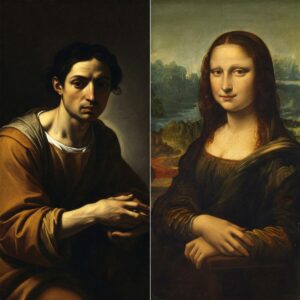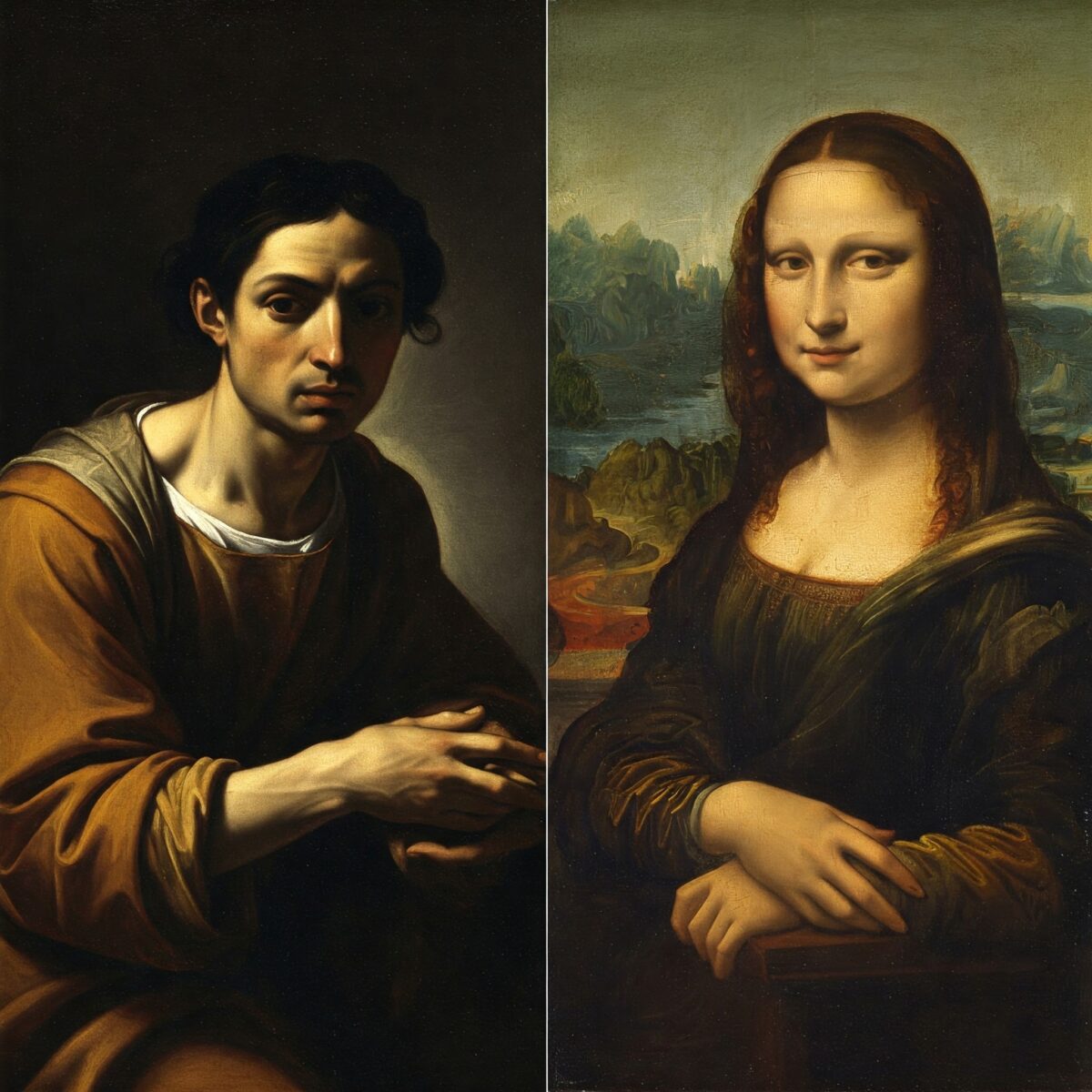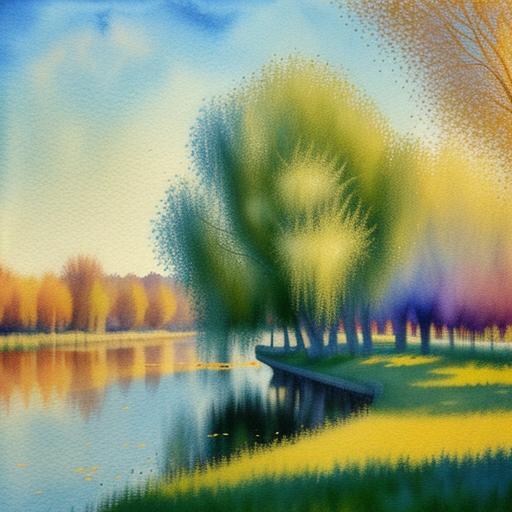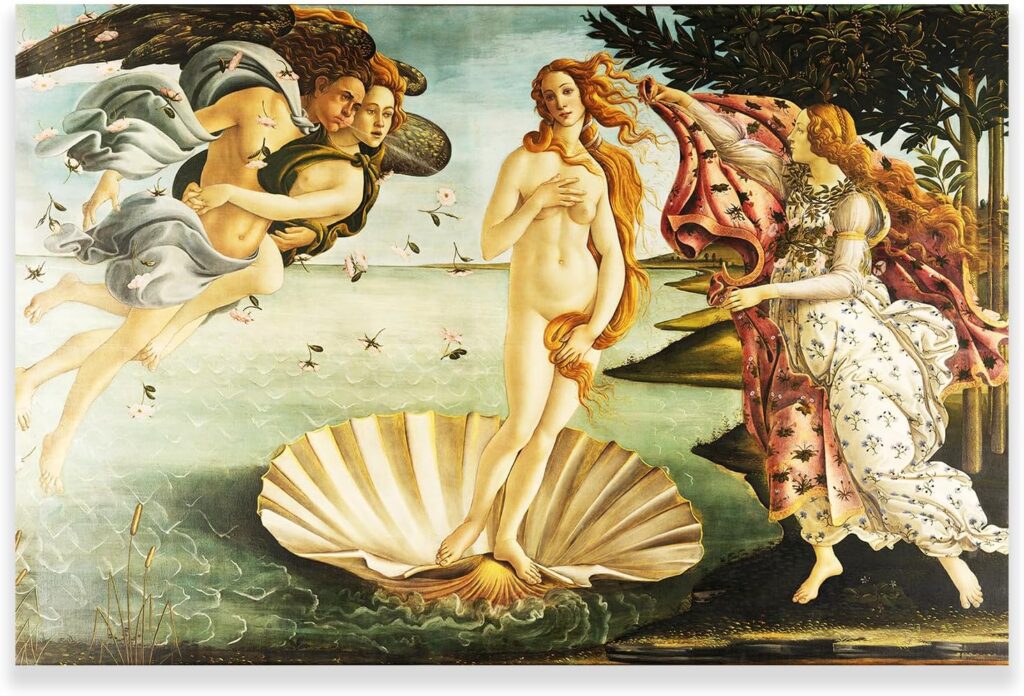So What is Renaissance Art? Renaissance art represents one of the most influential and transformative periods in Western art history. Spanning roughly from the 14th to the 17th century, the Renaissance (meaning “rebirth” in French) marked a dramatic shift from medieval traditions toward new ideals centered on humanism, scientific observation, and classical inspiration. Renaissance art emphasized realistic representation, precise anatomy, mathematical perspective, and a focus on the individual, forever changing how artists approached their craft and how we view art today.
Key Points:
- Renaissance art emerged in Italy around 1400 and spread throughout Europe
- Key characteristics include perspective, realistic anatomy, humanism, and classical influences
- Famous Renaissance artists include Leonardo da Vinci, Michelangelo, Raphael, and Botticelli
- The period introduced revolutionary techniques like linear perspective, sfumato, and chiaroscuro
- Renaissance art emphasized both religious themes and secular subjects including portraiture
- The legacy of Renaissance art continues to influence contemporary artistic standards
Renaissance Art Timeline
Early Renaissance Begins
Florence emerges as the cradle of Renaissance art with early innovators like Masaccio.
Linear Perspective
Brunelleschi develops mathematical linear perspective, revolutionizing spatial representation.
Botticelli’s Masterworks
Sandro Botticelli creates “Primavera” and “The Birth of Venus,” defining Early Renaissance aesthetics.
High Renaissance Begins
Leonardo da Vinci paints “The Last Supper,” marking the start of the High Renaissance period.
Sistine Chapel Ceiling
Michelangelo begins painting the Sistine Chapel ceiling, completing it in 1512.
School of Athens
Raphael completes “The School of Athens,” epitomizing High Renaissance ideals of harmony and balance.
Mannerism Emerges
Following Raphael’s death, a new style called Mannerism develops, featuring elongated figures and artificial poses.
End of Renaissance
The Renaissance gradually gives way to the Baroque period, characterized by dramatic contrasts and emotional intensity.
What is Renaissance Art?
Renaissance art emerged in Italy during the 14th century as a dramatic departure from medieval artistic traditions. The word "Renaissance" means "rebirth," and that's exactly what happened—a rebirth of interest in classical Greek and Roman culture, combined with new scientific approaches to understanding the world. Artists began studying nature directly, applying mathematical principles to their work, and celebrating human achievement.

Unlike medieval art, which often featured flat, symbolic figures against gold backgrounds, Renaissance artists strived to create realistic three-dimensional spaces populated by lifelike human figures. This artistic revolution spread from Florence throughout Italy and eventually across Europe, evolving through distinct phases from the Early Renaissance (1400-1490) to the High Renaissance (1490-1527) and eventually Mannerism (1520-1600).
Defining Characteristics of Renaissance Art
Renaissance art didn't just look different from what came before—it represented an entirely new way of thinking about art and its purpose. Here are the key characteristics that define Renaissance art:
1. Linear Perspective
One of the most revolutionary developments in Renaissance art was the mathematical system of linear perspective. Architect Filippo Brunelleschi developed this technique, which uses converging lines to create the illusion of three-dimensional space on a flat surface. Artists could now create convincing spatial depth where all parallel lines converge at a single vanishing point.
This scientific approach to depicting space completely transformed painting, allowing artists to create scenes that looked like windows into another world rather than flat decorations. Masaccio's "Trinity" fresco (1426-1428) was one of the first paintings to fully demonstrate these perspective principles.
2. Realistic Anatomy and Proportions
Renaissance artists studied human anatomy with unprecedented rigor. Artists like Leonardo da Vinci even performed dissections to understand how muscles and bones worked beneath the skin. This scientific approach led to much more accurate and convincing depictions of the human form.
"The noblest pleasure is the joy of understanding."
Leonardo da Vinci
Artists applied classical ideals of proportion, such as the concept that the human body should be measured in terms of head heights (usually eight heads tall for an ideally proportioned figure). This attention to realistic human anatomy represents a significant departure from the stylized figures of medieval art.
3. Naturalism and Direct Observation
Renaissance artists believed in studying nature directly rather than simply copying the work of others. They carefully observed light, shadow, texture, and color in the world around them, bringing a new level of naturalism to their work.
This commitment to observation extended beyond human figures to include animals, plants, landscapes, and architectural details. Artists like Jan van Eyck in the Northern Renaissance became especially renowned for their incredible attention to detail and ability to capture textures like fabric, metal, and glass with astonishing realism.
4. Humanism and Individualism
The Renaissance period embraced humanism—a philosophical movement that emphasized human achievement, potential, and dignity. This influenced art by:
- Increasing focus on portraiture and individual likeness
- Signing artworks (artists began to be celebrated as individuals)
- Including secular subjects alongside religious ones
- Depicting real people (often donors) in religious scenes
- Showing emotion and personality in human figures
5. Revolutionary Painting Techniques
Renaissance artists developed several groundbreaking painting techniques that enhanced the realism of their work:

| Technique | Description | Famous Examples |
|---|---|---|
| Sfumato | Softly blended transitions between colors and tones | Leonardo's "Mona Lisa" |
| Chiaroscuro | Strong contrast between light and dark | Caravaggio's works |
| Oil glazing | Thin transparent layers of paint for luminosity | Van Eyck's "Arnolfini Portrait" |
| Fresco | Painting on wet plaster for wall murals | Michelangelo's Sistine Chapel |
Italian vs. Northern Renaissance Art
While the Renaissance began in Italy, it developed differently when it spread to Northern Europe, particularly in the Netherlands, Germany, and Flanders.
Italian Renaissance
- Emphasized mathematical perspective and classical proportions
- Used fresco for large wall paintings
- Focused on idealized beauty and harmonious composition
- Major centers: Florence, Rome, Venice
- Key artists: Leonardo da Vinci, Michelangelo, Raphael, Botticelli
Northern Renaissance

- Emphasized extraordinary detail and surface textures
- Pioneered oil painting techniques with multiple glazes
- More interest in depicting everyday life alongside religious subjects
- Major centers: Flanders, Netherlands, Germany
- Key artists: Jan van Eyck, Albrecht Dürer, Hieronymus Bosch, Pieter Bruegel
The Northern Renaissance artists were masters of disguised symbolism, often hiding religious messages in seemingly ordinary objects. For example, a dog might represent loyalty, while specific flowers could symbolize virtues or vices.
Famous Renaissance Artworks and Artists
The Renaissance produced some of history's most recognizable masterpieces and celebrated artists:
Leonardo da Vinci (1452-1519)
Often considered the ultimate "Renaissance man," Leonardo was not only a painter but also an inventor, scientist, architect, and engineer. His most famous works include:
- "Mona Lisa" (c. 1503-1519)
- "The Last Supper" (1495-1498)
- "Vitruvian Man" (c. 1490)
Leonardo's scientific approach to art and his innovative use of sfumato technique created works of unprecedented subtlety and psychological depth. You can learn more about his extraordinary contributions in our article about Leonardo da Vinci's most famous paintings.
Michelangelo Buonarroti (1475-1564)
Primarily a sculptor, Michelangelo reluctantly painted the Sistine Chapel ceiling, creating one of art history's most impressive achievements. His works include:
- The Sistine Chapel ceiling frescoes (1508-1512)
- "David" sculpture (1501-1504)
- "Pietà" sculpture (1498-1499)
Michelangelo's powerful, muscular figures embodied Renaissance ideals of human dignity and potential. Learn more about his revolutionary approach in our article about Michelangelo, the amazing artist who changed history forever.

Raphael Sanzio (1483-1520)
Known for perfectly balanced compositions and graceful figures, Raphael created some of the High Renaissance's most harmonious works:
- "School of Athens" (1509-1511)
- "Sistine Madonna" (1512)
- Vatican "Stanze" frescoes (1508-1520)
Sandro Botticelli (1445-1510)
Known for his lyrical style and mythological subjects, Botticelli created some of the most beautiful works of the Early Renaissance:
- "The Birth of Venus" (c. 1485)
- "Primavera" (c. 1482)
- "Adoration of the Magi" (1475-1476)

The Lasting Influence of Renaissance Art
The innovations of Renaissance art permanently changed Western art and continue to influence artists today. The Renaissance established:
- The concept of the artist as a creative genius
- Scientific approaches to art (perspective, anatomy, optics)
- Oil painting as a primary medium
- The importance of drawing as the foundation of art
- The elevation of painting and sculpture from crafts to fine arts
Modern concepts of artistic training, composition, and representation all have roots in Renaissance innovations. You can see how Renaissance principles evolved in later movements by exploring our article on the evolution of art movements from Renaissance to postmodernism.
Even contemporary digital art still follows many Renaissance principles of composition and perspective. For those interested in how Renaissance color choices compare to modern approaches, our article on vibrant evolution: comparing colors in Renaissance and modern art offers fascinating insights.
The Renaissance wasn't just an artistic movement—it represented a fundamental shift in how humans viewed themselves and their place in the world. Through art that celebrated human potential, beauty, and achievement, Renaissance artists helped usher in the modern world. Understanding what Renaissance art is and how it revolutionized visual expression gives us deeper appreciation for its extraordinary achievements and enduring influence on our visual culture today.
FAQ: Common Questions About Renaissance Art
What are the main characteristics of Renaissance art?
Renaissance art is characterized by mathematical linear perspective, realistic human anatomy, naturalistic detail, classical influences, and new painting techniques like sfumato and chiaroscuro. It emphasized harmony, balance, and the dignity of the human form.
Who were the most famous Renaissance artists?
The most celebrated Renaissance artists include Leonardo da Vinci, Michelangelo, Raphael, and Botticelli in Italy, and Jan van Eyck, Albrecht Dürer, and Pieter Bruegel in Northern Europe. These masters created iconic works that continue to define our understanding of artistic excellence.
How did Renaissance art differ from Medieval art?
Medieval art was typically flat, symbolic, and focused on religious subjects with little concern for realistic representation. Renaissance art introduced mathematical perspective, realistic anatomy, classical inspiration, natural settings, and began including secular subjects alongside religious themes.
What is the significance of perspective in Renaissance art?
Linear perspective was revolutionary because it created the illusion of three-dimensional space on a flat surface using mathematical principles. This technique allowed artists to create more realistic scenes with convincing spatial depth, fundamentally changing how artists approached composition.
When did the Renaissance period start and end?
The Renaissance began in Italy around 1400 (with earlier roots in the late 1300s) and lasted until approximately 1600. Different regions experienced the Renaissance at slightly different times, with Northern Europe generally adopting Renaissance principles later than Italy.



